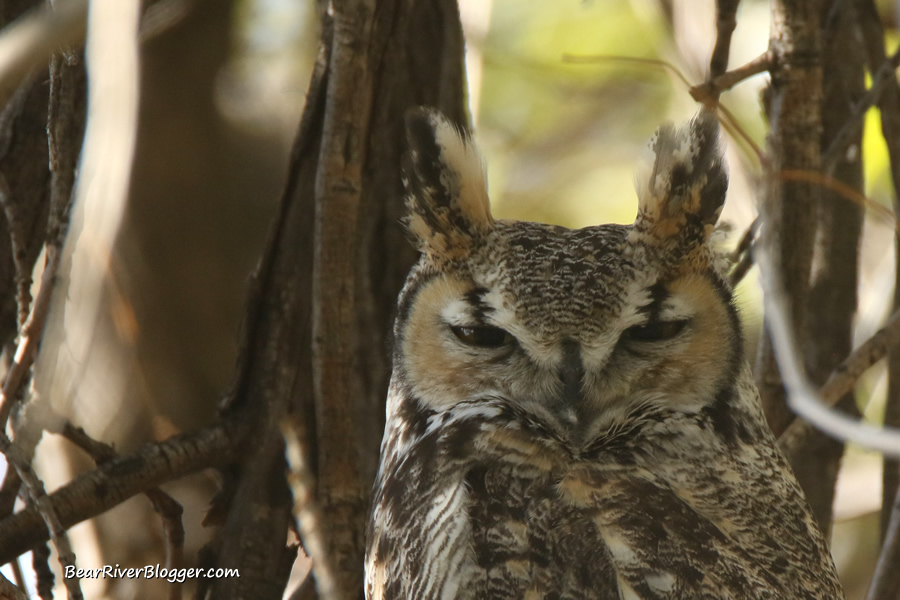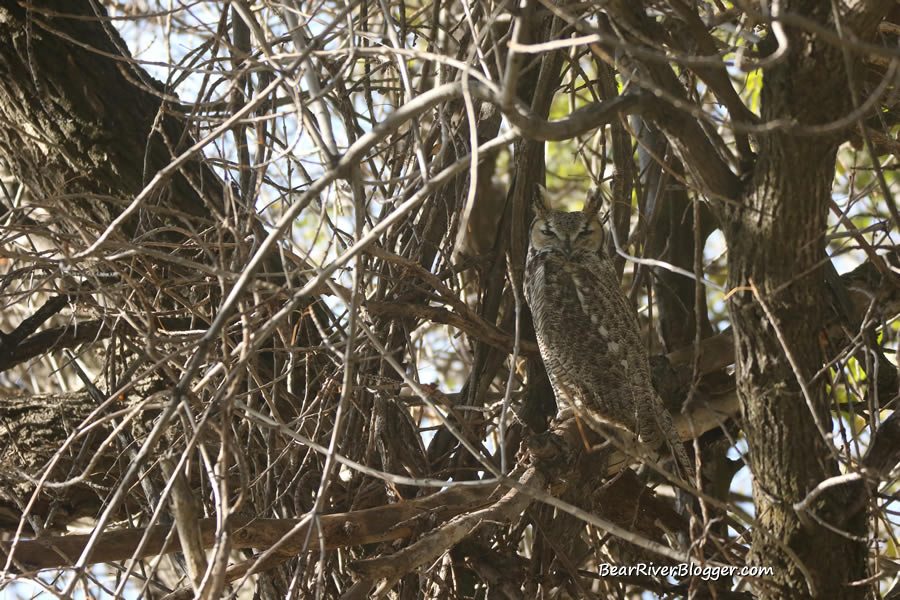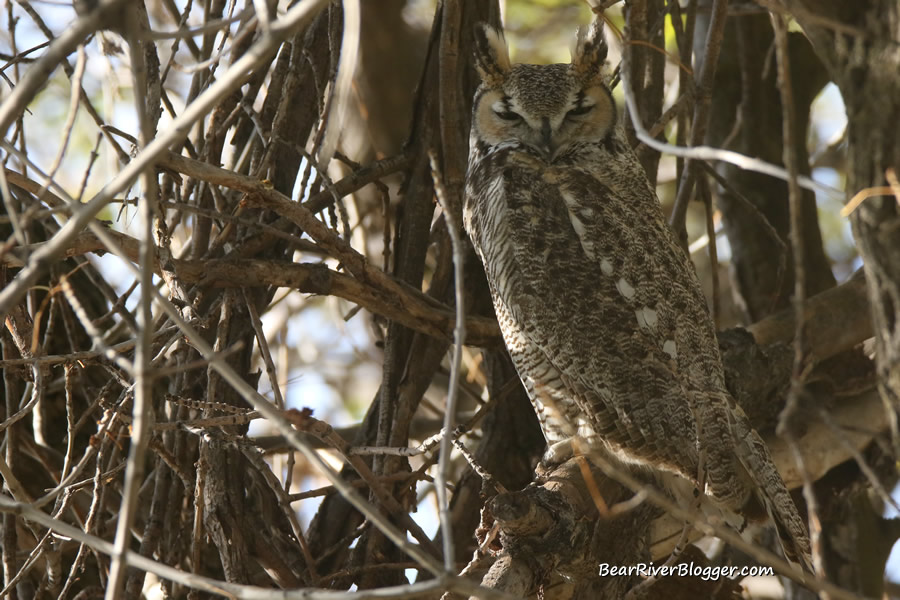As I pulled into my driveway late last night and turned off the motor the prevailing silence was quickly broken by a loud, spine-tingling sound coming from the tree branch right above my car, it was the unmistakable and very distinct hoot of a great horned owl.
This is not an isolated or rare occurrence by any means, mind you, as great horned owls commonly perch in my large trees during the day and are always welcome in the yard.
Well, at least I personally welcome them here as I’m pretty sure the mice and voles in the pasture have a difference of opinion on the matter but that’s another story for another day.
I’m certain all of the images for this particular blog post are of the very same male great horned owl I heard hooting right above me last night as I happened to notice him again early this morning in one of the backyard trees while I was feeding the dog.
Great horned owls are monogamous and very territorial and the large trees in my yard are a very routine place for at least one of them to perch during the day.
It is so routine, in fact, to have great horned owls perched in my trees that it’s actually not uncommon this time of year for me to find both owls in my yard at the same time, sometimes for several months or more, as winter approaches and the owls have reunited once again for the upcoming breeding season.
And with as much owl activity I’ve clearly had in my yard over the past several decades, it’s pretty safe to say my house is most certainly part of their territory.
If you’ve never been just a few short yards away from one of these large owls when they hoot, especially at night, I’m going to say you are most certainly missing out on one of the greatest thrills in birdwatching, at least for me that is.

Great horned owls hoot to communicate with other great horned owls, to both declare and defend their territory against rivals, and to once again locate their mate at the start of the next year’s breeding season.
It’s interesting to mention female great horned owls are much larger than the males, the reason why I’m certain the owl in my yard this morning is a male.
But despite being larger in size, however, the females have a higher-pitched hoot due to a smaller voice box.
It’s quite easy to discern the differences between male and female great horned owl hoots during the winter months when the pair of owls simultaneously defend and declare their territory with very energetic and intense hooting before the eggs are laid a bit later in the breeding season.
If you are interested in finding great horned owls, one of the best methods is to go to a place with a number of large trees right at dusk and sit and listen for their distinct hoot, especially during winter when they are actively defending their territory from rival owls.
Once an area is determined to have owl activity, return the next day and slowly but quietly search the trees for an owl.
They very rarely hoot during the day so locating them by sight or by finding a lot of owl pellets on the ground in a certain area is the the most reliable way to pinpoint their exact location.
Great horned owls are also known for camouflaging themselves a bit by, whenever possible, perching during the day in dense limbs and branches to avoid being spotted and pestered by American kestrels, crows, and various other birds that feel threatened by the owl’s presence.
If you do happen to find one, give it the respect it’s due and view it from a distance as great horned owls are active at night and, as a result, need to rest during the day, sometimes hardly moving a muscle which does make it difficult to locate them at times.

All of the images on today’s blog post were photographed in my yard this very morning but with my 600mm Tamron lens which allowed me to take a close-up of the owl but from a respectable distance so as to not disturb it in any way.
From my experience here in the yard, it is much easier to locate owls during the fall and winter months, not only from their increased hooting activity but also from trees losing their leaves, thus making their distinct size and shape a lot easier to discern from among the empty branches.
I can think of very few, if any, sounds in nature that get my juices flowing like the low hoot does from a nearby great horned owl at night, and seeing it again this morning in my backyard only makes yesterday’s experience that much sweeter.
If you’re like me and birdwatching and nature photography are your passion, I offer you to head on over to our subscribe page and sign up for email notifications for future blog posts like this one where we share our love for birds and nature through both photography and the written word.







